Royal Caledonian Asylum
The Caledonian Asylum was established in 1815, initially to provide support for Scottish children orphaned in the Napoleonic Wars which ended in that year. The charity subsequently broadened its remit and its object was later stated as being "the support and education of the children of soldiers, sailors, and marines, natives of Scotland, who have died or been disabled in the service of their country; and also the children of indigent and deserving Scotch parents resident in London, upon whom poverty has fallen or by whose death they have been left unbefriended and helpless orphans."
From 1819 until 1828, the Asylum occupied premises at 16 Cross Street, Hatton Garden. It then moved to new purpose-built accommodation at Copenhagen Fields, Islington, on what is now the Caledonian Road, immediately to the north of what later became the Pentonville prison site. The Asylum could now occupy around 120 boys and girls. The building had an entrance and board-room at its centre, with a boys' school-room and dining-room at the left; at the right were similar facilities for the girls, with the addition of a play-room. Large boys' and girls' playgrounds lay at the rear of the building. At the far end of the boys' playground were an exercise shed and a band room where the boys' pipe band practised. The band occasionally gave performances at charitable and other events.
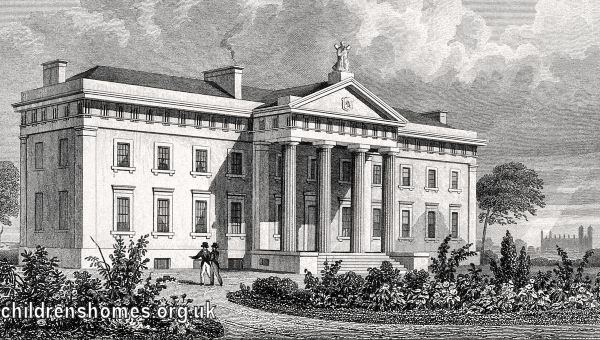
Royal Caledonian Asylum, Islington, 1828.
When Queen Victoria became patron of the establishment in 1852, it was granted the title of the Royal Caledonian Schools, although it continued to be known as the Royal Caledonian Asylum until after the First World War.
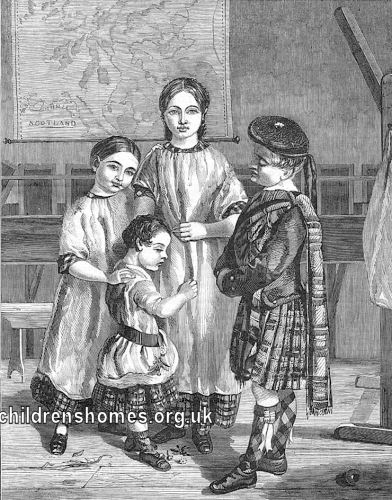
Children at Royal Caledonian Asylum, Islington, 1858.
Entry to the home, as happened in many other children's estblishmnents of the time, was by a six-monthly election process where donors to the Asylum's funds voted for their favoured candidates from a list of applicants. Part of the candidates list and a polling paper from the establishment's November 1908 election are shown below. The polling paper was later filled in to show the results of the poll.
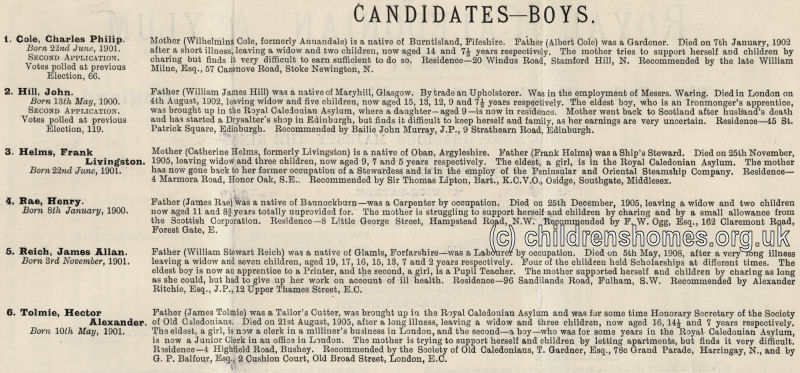
Royal Caledonian School candidates list, Bushey, 1908. © Peter Higginbotham
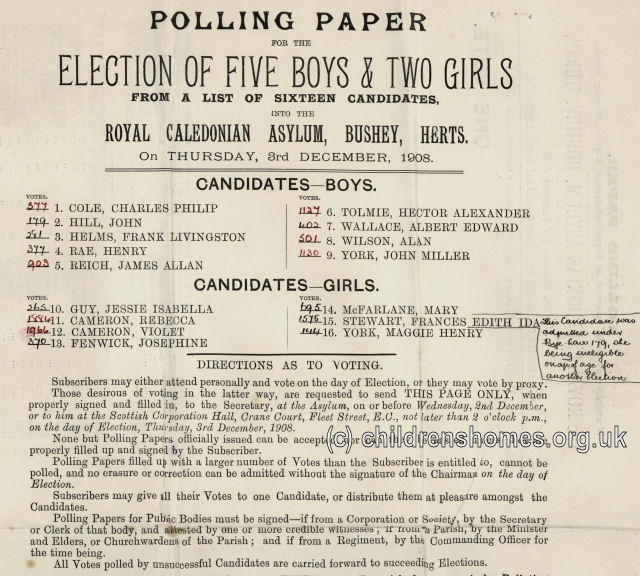
Royal Caledonian Asylum polling paper, Bushey, 1908. © Peter Higginbotham
By the end of the 19th century, the location of the Schools was becoming increasingly unsuitable and in 1902, a move was made to new purpose-built premises at Aldenham Road, Bushey, Hertfordshire. The new building was designed by William Emerson. At its centre was the main entrance hall with a concert hall behind. Girls were housed at the left of the building and boys at the right, with classrooms at each side of the centre and dormitories in the cross wings at each end. Other facilities included a swimming pool at the rear of the main building. The plans made provison for future extensions when funds allowed.
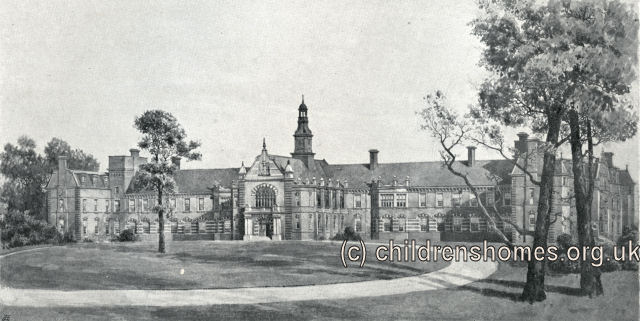
Royal Caledonian Asylum, Bushey, c.1905. © Peter Higginbotham
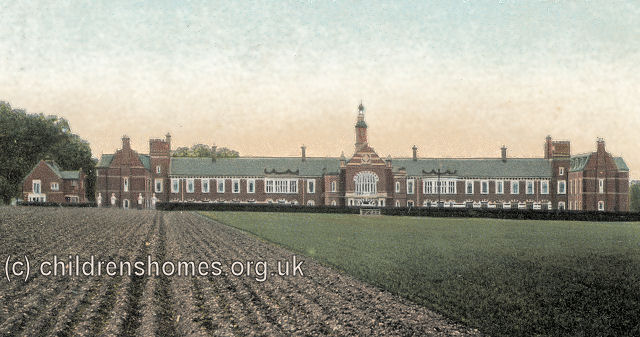
Royal Caledonian Asylum, Bushey, early 1900s. © Peter Higginbotham
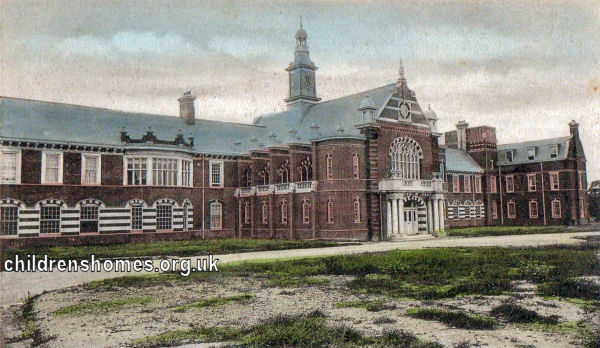
Royal Caledonian Asylum, Bushey, c.1902.
Like many independent children's homes, entry to the Royal Caledonian was by a six-monthly election process where donors to the institution's funds voted for their favoured candidates from a list of applicants. Part of the candidates list and polling paper from the November 1908 election are shown below. The polling paper has been filled in to show the results of the poll.

Royal Caledonian Asylum candidates list, Bushey, 1908. © Peter Higginbotham

Royal Caledonian Asylum polling paper, Bushey, 1908. © Peter Higginbotham
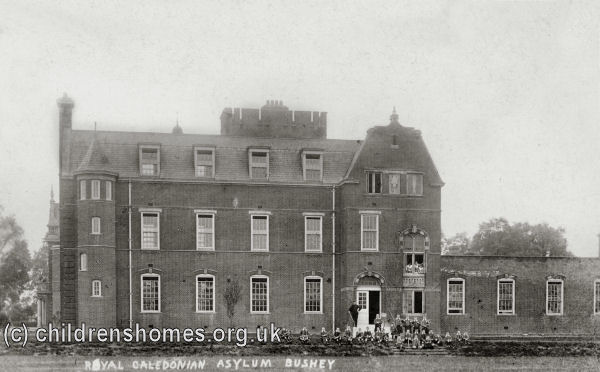
Royal Caledonian Asylum, Bushey, easrly 1900s. © Peter Higginbotham
The majority of pupils at Bushey still came from military families, with one or both parents serving in the armed forces. After 1948, children continued to board at the school but were educated at local state schools.
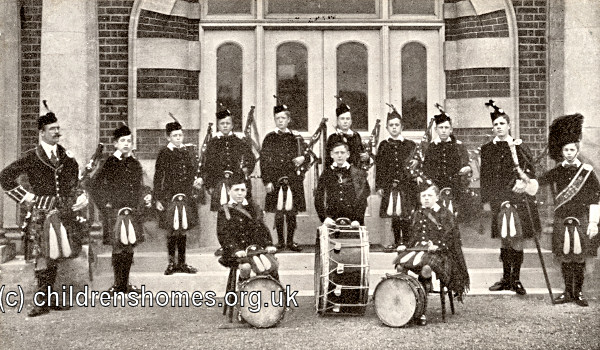
Royal Caledonian School Pipe Band, Bushey, c.1905. © Peter Higginbotham
In 1995, the Directors of the charity decided that its aims would now be better met by its becoming a grant-making body. The Bushey site was then sold off and the proceeds used to fund educational grants.
In 2012, the charity was renamed the Royal Caledonian Education Trust, still supporting the educational needs of the children of Scots who are serving, or who have served, in the armed forces.
The Royal Caledonian's Islington building was replaced by the flats of the Caledonian Estate. Its Bushey premises are now home to the Purcell School for Young Musicians.
Records
Note: many repositories impose a closure period of up to 100 years for records identifying individuals. Before travelling a long distance, always check that the records you want to consult will be available.
- The
Ancestry UK
website has two collections of London workhouse records (both name searchable):
- The Find My Past website has workhouse / poor law records for Westminster.
- London Metropolitan Archives, 40 Northampton Road, London EC1R OHB.
Census
Bibliography
- Higginbotham, Peter Children's Homes: A History of Institutional Care for Britain s Young (2017, Pen & Sword)
Links
Except where indicated, this page () © Peter Higginbotham. Contents may not be reproduced without permission.


